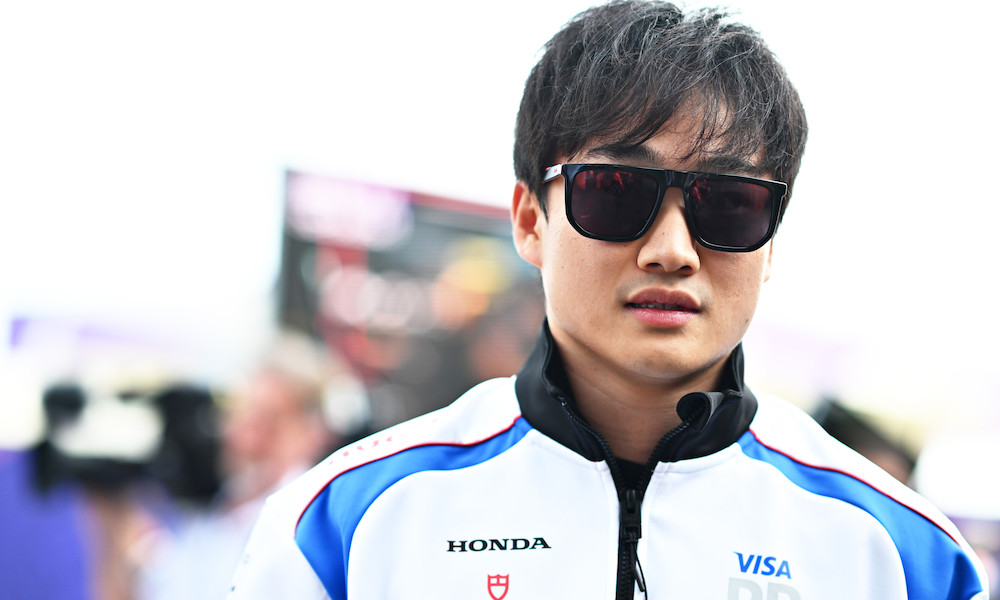
Yuki Tsunoda is ready for the toughest job in motorsports. Or, at least, he believes he is. At 24, with four seasons in Formula 1 plus a strong start to 2025 under his belt, he’s better-prepared for this opportunity than the man he replaced, former teammate Liam Lawson, and backs himself to thrive despite the fact that partnering Max Verstappen at Red Bull Racing is regarded by most as career poison.
Tsunoda has nothing to lose. This was destined to be his last year in the Racing Bulls fold, with Red Bull team principal Christian Horner saying last December that after five years in what he called the “support team,” there comes a point where “you’ve either got to let them go at that point or look at something different.” Tsunoda has proved himself worthy of a seat on the F1 grid, but opportunities are limited for ’26 if Red Bull’s B-team does not retain him. The jump to Red Bull presents an opportunity to change the direction of his career, and perhaps even establish himself in a front-running team for the long term.
It’s a big ask, given that not only is he being pitched into a seat regarded by most as the toughest in F1 but also doing so with no prior experience of the car, two races into a season, and for his home grand prix. The devotion of the home crowd and the desire of circuit owner Honda for him to thrive means the pressure will be intense, and how Tsunoda deals with that could set him up for success or failure at Red Bull. He will get more than the ludicrous two weekends afforded to Lawson, but the die will likely be cast one way or the other at Suzuka. Red Bull will soon turn its attention to identifying a replacement for ’26 if Tsunoda doesn’t convince – and convince quickly.
This is a fascinating challenge considering sources within Red Bull have long made it clear that question marks over Tsunoda’s mentality, more than his driving ability, led to him repeatedly being passed over for promotion. This all started when Tsunoda first tested for what was then called AlphaTauri in the post-season Abu Dhabi test in 2020 and the team was astonished by how vocal and emotional his communications were over the radio. It is something Tsunoda has, by his own admission, had to work on.
However, the perception has become increasingly anachronistic as Tsunoda has improved what he calls his “emotional control” significantly. The last time there was a notable problem was in the Bahrain Grand Prix in 2024, when team orders frustrated him late on and he made a statement with an odd lunge and lockup past Daniel Ricciardo on the slowdown lap. Since then, Tsunoda has been in a better place, aside from using an ableist slur during Austrian Grand Prix qualifying, for which he offered “big apologies,” as well as paying a substantial fine. But unacceptable language aside, too often legitimate pushbacks to team instructions are interpreted as problematic when they shouldn’t be. The most recent example was in the Chinese Grand Prix, when he was right to demand he work the front end harder and didn’t accept the pit wall telling him not to. Shortly afterwards, his reasoning was understood and the team backed the decision. Therefore, the idea of a driver who is not working with his team is an outdated one.
F1 has been a steep learning curve for Tsunoda. When he arrived in 2021, finishing ninth on debut in Bahrain, he had a single season in each of European F3 and F2 under his belt and was still very much a work in progress. He confessed to underestimating how tough the step up to F1 would be, and his first season was a chastening experience with too many mistakes. But he gradually learned, to the point where he was able to become the team’s spearhead once Pierre Gasly left for Alpine at the end of 2022. He’s now a far more dependable driver, and any patchiness in his results is more down to his team’s inconsistency than his own shortcomings.
The first two weekends of this year have illustrated that. In Australia, he ran in the top six until the rain returned on lap 44. The team flip-flopped on strategy, leaving him out for too long while other teams called their cars in, turning a strong result into a pointless afternoon. A similar thing happened in the Chinese Grand Prix, where Racing Bulls stuck with a two-stop strategy as others adapted to one. Only his strong run to sixth in the Shanghai Sprint rewarded him with points in a season where he has been a standout performer. The question now is whether he can translate his superb form at Racing Bulls into Red Bull Racing driving a faster, but much trickier, car.
To make his promotion work, Tsunoda must at least partially replicate Verstappen’s skill for extracting the potential from a difficult car. The Red Bull RB21 has plenty of downforce and grip; the trouble is accessing its potential consistently due to its balance limitations. Success or failure in doing so makes the difference between it being a podium threat and be ing at risk of elimination in Q1. Verstappen’s extraordinary ability is to drive the car in a way that minimizes the limitations and makes the most of that potential.